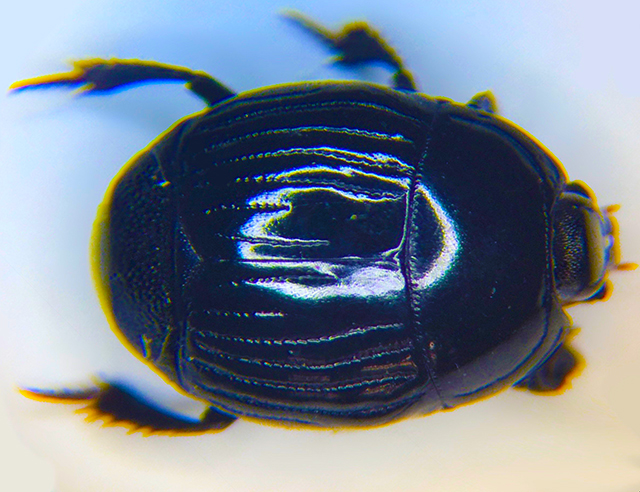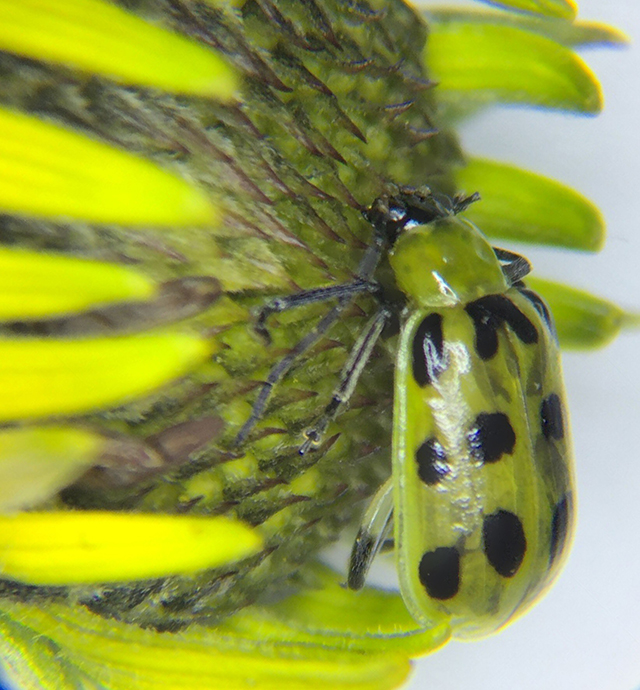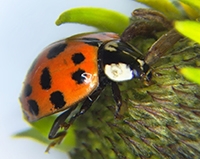Jewel beetles, also know as metallic wood boring beetles, from the family Buprestidae have historically been used. Several species from the genus Sternocera are preferred because of their iridescent wings.[1]
With the explosion of reality cooking shows, the exotic palate is being considered by Western culture. Famous chefs like Gordon Ramsey, my husband’s favorite chef, and other master chefs are experimenting with insects in their cuisine. Around the world, beetles such as long-horned, june, dung and rhinoceros varieties are regularly used as a primary protein rich source in diets.[2,3] They can be prepared crunchy or served raw. Actually, there are some who say the Native Americans fire roast and eat them like popcorn.[3] Who knows, we might start seeing mealworm lettuce wraps on the menu in the future.[4}
Wow! There are YouTube videos of people with their pet beetles. The Hercules beetle from the family Scarabaeidae (commonly known as scarab beetles) and is the most popular.[5] These beetles do not bite, sting or produce poison. To live happy lives, they like moist decaying wood and leaves, eat jelly, honey and bananas, and like room temperatures with humid environments. Adults may live 1-2 years.
Beetles are amazing. My favorite aspect of learning about beetles is identifying them, discovering their life story, and communicating with entomologists on expanding local data. Beetles are strong, survivalists, and unbelievably, breathtakingly beautiful animals. I welcome you to explore the order of Coleoptera.
By: Heidi Meier, Community Scientist

About the community scientists leading this project:
“I collected beetles as a youngster, and the Urban Ecology Center has me reliving my youth. I am a community scientist working on the invertebrate survey in the three UEC parks. Beetles are fascinating, and they are plentiful. There are 115 families and thousands of different species of beetles right here in Milwaukee. For the past several years, with sweep net in hand, I have been collecting beetles, taking them home and identifying them. Identification can be problematic because of the great number of species and the small size. Many are smaller than ants. I figure it takes me an hour to identify each new species I find. The research is actually fun. Under the microscope, each individual is stunningly gorgeous, colorful and unique. There is a special satisfaction in identifying individual specimens, and realizing how much work scientists have already done in describing what I'm just learning. Reference materials are available in books and online.
A new player has joined the beetle invertebrate survey. Heidi Meier recently joined the beetle team and added new life by digitizing collection data on a spreadsheet, and purchasing a microscope to provide better photos. I would recommend that anyone with an interest in insects, be they butterflies, bugs, spiders or dragonflies, join a team and aid the Urban Ecology Center in its survey of animals without backbones.”
By: Jon Bales, Community Scientist and Project Leader
Join Jon and Heidi on a 2018 beetle survey!
Upcoming beetle surveys are happening at all three UEC branches. Find out dates, times, and register here!

Photos (from top to bottom): Multicolored Asian lady beetle (Harmonia axyridis, family Coccinellidae, 7 mm, October 13, 2017, Washington Park), clown beetle* (Hister coenosus, family Histeridae, 6 mm, October 27, 2017, Riverside Park), and spotted cucumber beetle (Diabrotica undecimpunctata howardi, family Chrysomelidae, 6 mm, October 13, 2017, Washington Park).
These beetles were collected in Urban Ecology Center greenspaces by community scientists Heidi Meier and Jon Bales. Identifications have been confirmed by naturalists at bugguide.net. Photos by Heidi Meier.
* This clown beetle is the first in Wisconsin to be recorded in BugGuide.Net!
1. Gostelow, M. (1978). Mary Gostelow's Embroidery Book. Newton Abbott: David and Charles.
2. Ramos-Elorduy, J. (1998). Creepy Crawly Cuisine. Rochester, VT: Park Street Press.
3. Holland, J.S. (2013, May 14). U.N. Urges Eating Insects; 8 Popular Bugs to Try. Retrieved from https://news.nationalgeographic.com/news/2013/13/130514-edible-insects-entomophagy-science-food-bugs-beetles/
4. Mealworm Wraps. (2017). Retrieved from http://www.ohmybugrecipes.com/wraps.html
5. Rhino Beetle Care Sheet. (2017). Retrieved from http://www.bugsincyberspace.com/Rhino_Beetle_Care_Sheet.html





